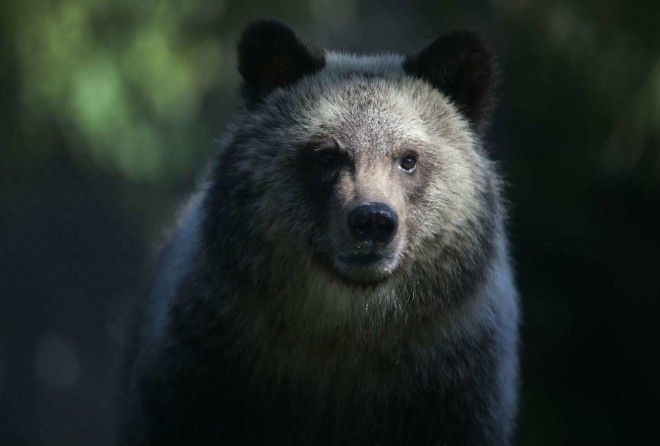Keep your distance and read up on these facts about their love for munching moths, eating smaller bears, and being polar-curious.
1. THEY’RE ACTUALLY PRETTY LIGHT EATERS.
Grizzlies—more accurately, North American brown bears—are strong enough to make a meal out of whatever they like, including moose, elk, and bison. Despite their reputation for having carnivorous appetites, their diet also consists of nuts, berries, fruits, and leaves. They’ll even eat mice. The gluttony doesn’t kick in until they begin to exhibit hyperphagia, preparing for winter hibernation by chomping down enough food to gain up to three pounds a day.
2. THEY USE “CPR” TO GET AT YOUR FOOD.

More than 700 grizzlies live in or near Yellowstone National Park, which forces officials to constantly monitor how park visitors and the bears can peacefully co-exist. Because bears rummaging in food containers can lead to unwanted encounters, the park’s Grizzly & Wolf Discovery Center tests trash cans and coolers to see if they’re bear-resistant. (Nothing is truly bear-proof.) Often, a bear will use “CPR,” or jumping on a canister with its front legs, in order to make the lid pop off. Containers that can last at least 60 minutes before being opened can be advertised by their manufacturers as being appropriate for bear-inhabited environments.
3. THEY CAN CLIMB TREES.
It's a myth that grizzlies can't climb trees. Though their weight and long claws make climbing difficult, and they need support from evenly-spaced branches, grizzlies can travel vertically if they choose to.
4. THEY’LL EAT OTHER BEARS.
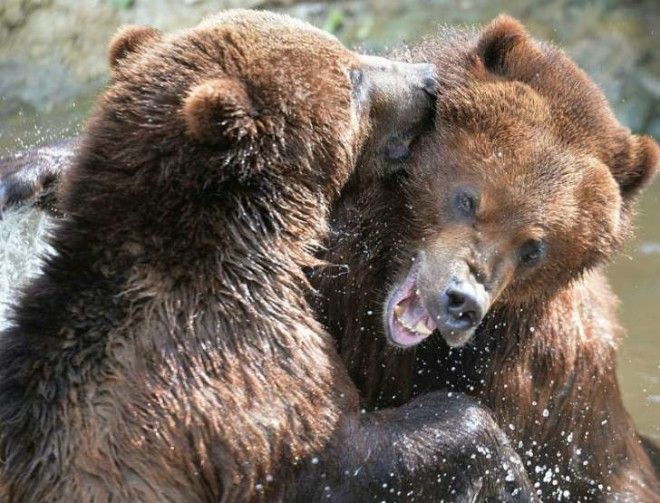
In addition to being omnivorous, grizzlies can also be classified as cannibals. They’ve been spotted eating the carcasses of black bears in Canada. Calling it a “bear-eat-bear world,” officials at Banff National Park in Alberta said the grizzlies are “opportunistic” and more than willing to devour black bears—sometimes just one-fifth their size—if the occasion calls for it. And it’s not just black bears: One study on bear eating habits published in 2017 recorded a 10-year-old male eating a 6-year-old female brown bear.
5. THEY LOVE MOTHS.
Although grizzlies enjoy eating many insects, moths are at the top of the menu. Researchers have observed that bears are willing to climb to alpine heights at Montana’s Glacier National Park in order to feast on the flying appetizers. Grizzlies will turn over rocks and spend up to 14 hours in a day devouring in excess of 40,000 moths.
6. A PAIR OF THEM ONCE LIVED ON WHITE HOUSE GROUNDS.
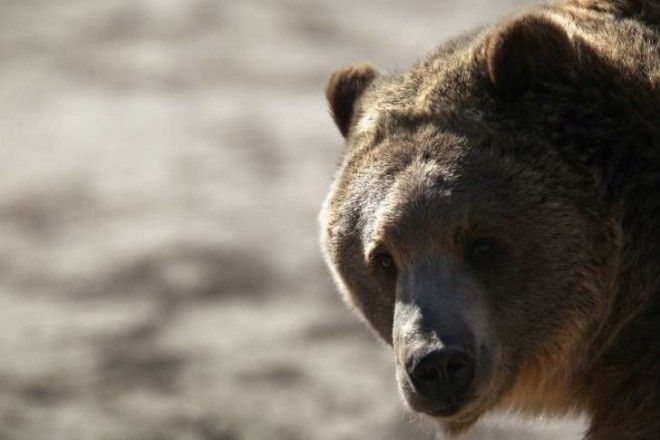
In what would be considered an ill-advised decision, explorer Zebulon Pike decided to gift his friend President Thomas Jefferson with two grizzly cubs in 1807. Jefferson reluctantly accepted them and kept them in a cage near the north entrance to the White House, and later re-gifted the cubs to museum operator Charles Willson Peale. Sadly, one of them got shot after getting too aggressive with Peale’s family.
7. THEY CAN RUN FASTER THAN USAIN BOLT.
The bears we see in fiction or lazing about in the wild tend to look cumbersome and slow, as most anything weighing nearly a half-ton would. But in a land race, even Olympic champions would be on the losing end. Grizzlies can reportedly run 35 mph, and sustain speeds of up to 28 mph for two miles, faster than Usain Bolt’s 27.78 miles per hour stride (which he can only sustain for a few seconds).
8. THEY MATE WITH POLAR BEARS.
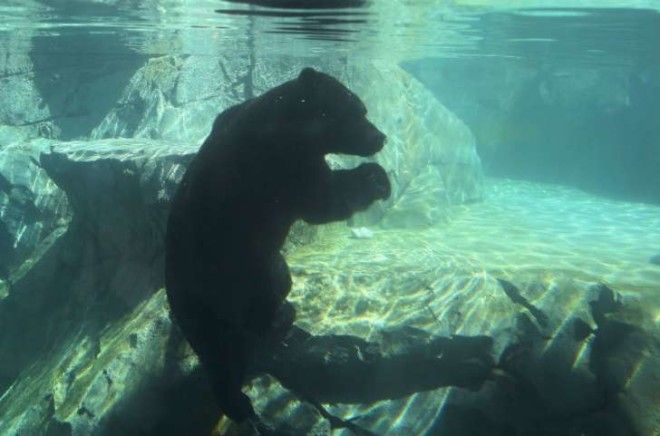
In parts of Alaska and Canada where grizzlies and polar bears converge, there are sometimes rare sightings of what observers call “grolar bears” or “pizzlies.” With large heads and light-colored fur, they’re a hybrid superbear birthed from some interspecies mating. Typically, it’s male grizzlies who roam into those territories, finding female polar bears to cozy up with. Researchers believe climate change is one reason the two are getting together.
9. THEY KNOW HOW TO COVER THEIR TRACKS.
When it comes to intellect, grizzlies may not get all the same publicity that birds and whales do, but they’re still pretty clever. The bears can remember hotspots for food even if it’s been 10 years since they last visited the area; some have been observed covering tracks or obscuring themselves with rocks and trees to avoid detection by hunters.
10. THEY’RE NOT OUT OF THE WOODS YET.
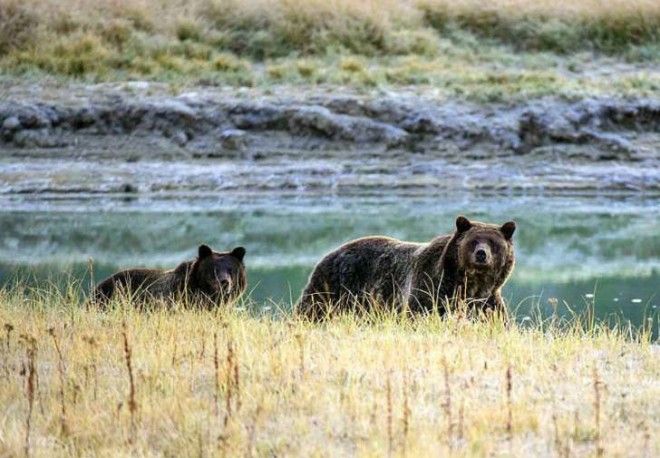
For 42 years, grizzlies at Yellowstone occupied the endangered species list. That ended in 2017, when the U.S. Fish and Wildlife Service declared that a rise in numbers—from 150 in the 1970s to more than 700 today—meant that conservation efforts had been successful. But overall, the grizzly population is still struggling: Fewer than 2000 remain in the lower 48 states, down from 50,000 two centuries ago.
